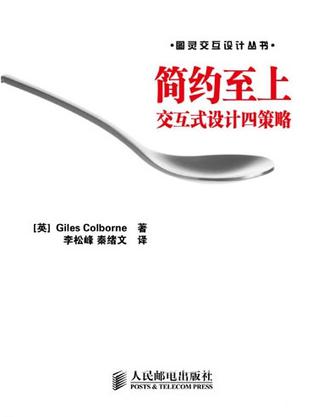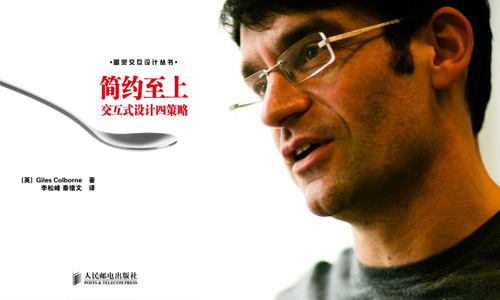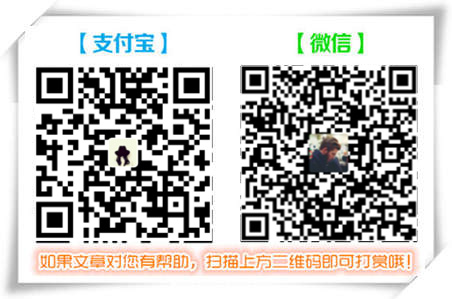简约至上是一本书籍,名称为《简约至上》,副标题名称为: 交互式设计四策略。简化设计的四种策略:删除,隐藏,转移,重组,主要围绕着这几个点进行展开讲解。——明月PM
书籍简介

作者: [英] Giles Colborne
出版社: 人民邮电出版社
副标题: 交互式设计四策略
原作名: Simple and Usable Web,Mobile,and Interaction Design
译者: 李松峰 / 秦绪文
出版年: 2011-1-1
页数: 188
定价: 35.00
装帧: 平装
丛书: 图灵交互设计丛书
ISBN: 9787115243249
豆瓣评分 8.4
内容简介 · · · · · ·
追求简单易用是人类的本性,无论是互联网产品。还是移动应用。亦或其他交互式设计,简单易用始终都是赢得用户的关键。同时,简单易用的程度也与产品寿命的长短密切相关。在《简约至上:交互式设计四策略》中,作者Giles托20多年交互式设计的探索与实践。提出了合理删除、分层组织、适时隐藏和巧妙转移这四个达成简约至上的终极策略,讲述了为什么应该站在主流用户一边,以及如何从他们的真实需求和期望出发,简化设计,提升易用性。创造出卓而不群、历久弥新的用户体验。
作者简介 · · · · · ·
GilescColborne曾任职于英国航空公司、英国物理学会出版社和灵智集团,二十多年来潜心钻研交互式设计与易用性,颇有建树。2003年至2007年任英国易用性专家协会主席,曾与英国标准机构合作制定可访问性方面的标准。2004年与人共同创立咨询公司cxpartners,该公司服务的全球客户包括诺基亚、万豪国际酒店、eBay等。
目录 · · · · · ·
第1章 话说简单 1
关于简单的故事 2
简单的威力 4
复杂的产品不可持续 6
不是那种简单法 8
特征 10
· · · · · · (更多)
第1章 话说简单 1
关于简单的故事 2
简单的威力 4
复杂的产品不可持续 6
不是那种简单法 8
特征 10
貌似简单 12
了解你自己 14
第2章 明确认识 17
描述要点的两种方式 18
走出办公室 20
观察什么 22
三种用户 24
为什么应该忽略专家型用户 26
为主流用户而设计 28
主流用户想要什么 30
感情需求 32
简单意味着控制 34
正确选择“什么” 36
描述用户体验 38
.讲故事 40
环境、角色、情节 42
极端的可用性 44
简便的方式 46
洞察力 48
明确认识 50
分享 52
第3章 简约四策略 55
简化遥控器 56
遥控器 58
四个策略 60
第4章 删除 63
删除 64
避免错删 66
关注核心 68
砍掉残缺功能 70
假如用户…… 72
但我们的用户想要 74
方案,不是流程 76
如果功能不是必要的 78
真有影响吗 80
排定功能优先级 82
负担 84
决策 86
分心 88
聪明的默认值 90
选项和首选项 92
如果一个选项还嫌多 94
错误 96
视觉混乱 98
删减文字 100
精简句子 102
删减过多 104
你能做到 106
焦点 108
第5章 组织 111
组织 112
分块 114
围绕行为组织 116
是非分明 118
字母表与格式 120
搜索 122
时间和空间 124
网格 126
大小和位置 128
分层 130
色标 132
期望路径 134
第6章 隐藏 137
隐藏 138
不常用但不能少 140
自定义 142
自动定制 144
渐进展示 146
阶段展示 148
适时出现 150
提示与线索 152
让功能容易找到 154
隐藏的要求 156
第7章 转移 159
转移 160
在设备之间转移 162
移动平台与桌面平台 164
向用户转移 166
用户最擅长做什么 168
创造开放式体验 170
菜刀与钢琴 172
非结构化数据 174
信任 176
第8章 最后的叮嘱 179
顽固的复杂性 180
细节 182
简单发生在用户的头脑中 184
图片致谢 187

图灵访谈之三十一:专访《简约至上》作者Giles Colborne
注:以下是Giles Colborne回复图灵社区访谈邮件的原文。
Q1:Your book Simple and Usable is not only welcomed by designers, but also in a must-read list for product manager in China, did you see this happen elsewhere? In your opinion, what are the causes for that?
Ten years ago, the product managers I met tended to focus on 'marketing' issues like price points or 'finding gaps in the market'. Today, product managers pay a lot more attention to design. Modern product managers seem more like 'design strategists'. The need for designers and product managers to work together has never been stronger.
When I was planning the book, I wanted to address both roles. The first sections ('Why are we here' and 'Setting a vision') are focussed more on the kinds of questions a product manager needs to ask in setting a design brief. The 'four strategies' are about how a designer can answer the brief. I believe that the most effective product managers and designers are the ones who understand both sides.
So I'm glad that the book appeals to both audiences. One of my goals was to help designers and product managers to work together more effectively by helping them share a vision of simplicity.
Q2:What inspired you to write Simple and Usable? Are there any stories behind this book?
My fascination with simplicity began with my love of science. In science, the deeper you go, the simpler everything becomes.
I remember sitting in a university lecture on electromagnetism. Up to that point, I'd spent years learning about electrical circuits and magnetic forces and memorising dozens of equations and rules. The lecturer explained that there was another way of looking at it and distilled all those years of learning into four simple equations - Maxwell's Equations. They're famous in science because they cover everything there is to know about electromagnetic forces, and yet they're very simple. Each equation is a subtle variation of the others - scientists call them beautiful.
Sometimes people tell me the world is complex and try to use this as an argument against simplicity. I think of the way that science takes the complex world around us and packages it in a few simple equations - ready to be unpacked again later.
Great design is like that: it takes the complex problems of the world and distills them into a simple object or a piece of software. A knife or a spreadsheet are simple designs that can be used by anyone to tackle an infinite variety of problems.
Q3:You have introduced four primary principles in Simple and Usable. From a cross-cultural perspective, do you think these principles are universal enough to be applied to other cultures? How about China?
One of the delights of my job is that I get to watch users all over the world - across Europe, Asia, North and South America and Australia. In my experience, the four strategies do appear to be universal.
I think that the differences between European writing and Chinese characters make people believe that interfaces need to be completely different. Mostly, that isn't true - my colleague Tan Chui Chui has written and presented about that at a number of international conferences.
Of course, people in different cultures tend to have different knowledge and skills. This means they have different expectations of design. So what feels simple to someone in China may not feel simple to someone in France.
So you need to begin by understanding your users. Once you know how they see the world, you can use the strategies - remove, organise, hide and displace - to simplify things for them.
Q4:For people who are interested in user interaction design, what books would you suggest them to read? And is there a particular order of these books?
As the field is growing there are great new books being published all the time. So any list I come up with will be incomplete and I can only really tell you about some of the books that influenced me, in more-or-less the order in which I read them.
Forget all the rules about graphic design including the ones in this book (Bob Gill). I read this book when I was at school. Bob Gill was a graphic designer who was very influential in the 60s and 70s. His book is about how to find the simplest, most powerful way of communicating an idea. He uses very few words and lots of wonderful examples of his own work. Lots of designers say 'you need to understand the rules, so you know which rules to break'. I think that's wrong. Bob Gill's book shows what's important is to understand why you're breaking a rule. It's out of print now, though it used to be very popular - I bought a copy a few years ago on a second hand book website. I don't suppose a Chinese language version was ever published. I'd love to know if there's a Chinese equivalent.
Computers as Theatre (Brenda Laurel). This is another book that influenced me early on. I have to say, it's not the easiest book to read, but Brenda Laurel talks about how writing software is like staging a play. Since then, other people have written about the role of 'storytelling' in design, but I think Brenda Laurel's book is deeper and more perceptive than anything else I've read. Today, when I recruit designers, one of the most important things I'm looking for is an understanding of their role as 'theatre directors' and the role of users as a 'participating audience'.
About Face (Alan Cooper). I'm a big fan of books like The Elements of Style by Strunk and White, which teach people the rules of grammar and composition - how to write well. About Face is the equivalent for user interface designers. Everyone should read this book.
Envisioning Information (Edward Tufte). This book isn't really a textbook, it's a series of lectures. You can't 'dip in', you have to read each chapter from beginning to end. Once you understand that, you discover it's full of great ideas and examples. Tufte's idea of the 'data:ink ratio' (try to express as much information on the printed page while using as little ink as possible) is a great rule for anyone trying to simplify the way they present information to users.
Q5:We can see that you have been through some major transitions in your career paths, from BAe systems to publishing, some of them even seem to be a little irrelevant, do you have something interesting to share with us? Which one would you describe as the most important one?
I've been very fortunate - in each of my jobs, I've been able to follow the things that were interesting to me and so when I look at my career path, it feels more like a straight line than a zig zag.
When I was at university, I studied physics. But I was interested in people and computers and so I took side courses in psychology and programming. And this was at a time when computers were being used for publishing for the first time, so I experimented with desktop publishing and writing.
Then at BAe, they decided that my interest in psychology and computer programming meant I should work in the Human Computer Interaction group, so I discovered User Centred Design. But aerospace projects take years to develop and involve very large teams and I wanted to work where I could make more of a difference, so I moved on.
I went to work for a small consultancy helping designers make use of technology. I got to work with a lot of small businesses and to see how they work and to understand the differences between the ones that grew and the ones that stayed small - that was valuable when I started my own business. But I wanted to create software again.
At Institute of Physics Publishing, I used my knowledge of User Centred Design to try to make their first electronic publications (on CD-ROM) easy to use. While I was there, I found a computer running something called 'The World Wide Web' and started to play with that, and it was obvious that this was going to change the world.
Electronic journals seemed like a small part of what was possible, so I moved to an agency that made web sites for international companies. There I learned about how businesses work and how to design in that environment and started to show them how to make designs more usable.
From there, it seemed like a logical step to take what I'd learned and start my own agency, with my business partner, Richard Caddick.
Throughout my career, I've really just followed my interests: people, technology, design and communication. And wherever I've gone, I've looked for opportunities to do great work.
Some of the best career advice I ever had came from a book called What Color Is Your Parachute? It said: 'do what you love and the money will follow'. I think that's true. Success is much easier when you're concentrating on finding ways to do great work that you love doing.
Q6:‘Entrepreneurship’ is certainly among the hottest keywords in China, would you like to share your experience of forming cxpartners? Is there any suggestion you can give to China's entrepreneurs in this field?
When I was working with small businesses early in my career, I'd find that the managing directors kept saying the same thing: 'my company doesn't seem to be able to grow larger than 5 (or 10 or 20) people but I'm working really hard'. As an outsider, it was obvious that this had nothing to do with 'the economy' or luck.
Some managing directors tried to control everything. They wanted to be involved in every piece of work, so their businesses stayed small. Some managing directors were good at delegating work, so their businesses grew.
When Richard and I set up cxpartners, that lesson was at the forefront of my mind. We spent a lot of time thinking about what to delegate and what to do ourselves. And we always tried to find people who were better than us at the work we were delegating.
So our first employee was not a junior designer - because we didn't want to delegate our design work to someone who was a junior. Instead, we hired someone to help us with the invoicing and accounts - a very talented person who is now our Operations Director.
These days whenever Richard and I sit down to plan company strategy, the question we ask is: 'what should we delegate so that we have time to grow the business?'.
Q7:Many designers who have certain level of experiences will have to face their own threshold problem. Always, they found themselves either repeat their own works or repeat others' works. Do you have any suggestions for that? And how do you manage to find your next inspiration?
I think that three ingredients are necessary for creative design.
The first is sources of inspiration. It's important to read widely and to open yourself to lots of experiences. I try to read about science and art and history and politics. I'm reading a book about botany at the moment, which is not something I've done since I was at school. But understanding how plants work is making me think about how some of those ideas could be applied to my designs or even my business.
The second is having time to be playful. We try to build in 'thinking time' in every project for ideas and inspiration. We play games when we're sketching our first design concepts to try to make ourselves come up with new ideas and share ideas so that our design solution has many possible influences.
The last, is having a 'feedback loop' - making sure that before a design goes into production, that it's tested with real users in a realistic situation. Often you learn that there's a better way of doing something or that something you were sure would work needs to be fixed.
I guess what's common to each of those three things, though, is that you must look for outside influences that disrupt your way of thinking and force you to see the world anew.
Q8:Writing code and making designs have become easier these days, do you think there is a trend to reduce the technical obstacles to be a designer? Do you see the future that everyone can design for themselves?
I think we've always lived in a time when everyone can design for themselves. In the age of wooden machines, anyone could pick up a knife and carve something themselves. In the age of software, anyone can write code and try things out. And in the coming age of 3D printers, anyone will be able to make… anything!
Of course, not everyone wants to. And some people become better at design than others - so I am sure there will always be a need for professional designers and plenty of opportunity for amateur designers.
What's great about the digital age, is that amateurs can distribute their work widely. Anyone can publish a game, write a blog, create an app and offer it to hundreds of millions of people around the world. And because the cost of entry is so much lower,
Q9:Lots of designers have issues dealing with their customers, is there anything they can do to make everyone—including designers, customers, and users—happy?
There's a myth among designers that the perfect project is one where you arrive at the client's offices one day and reveal your design and the client cries with joy and thanks you with tears running down his face.
This has never happened to anyone, anywhere ever. It will never happen to you. You will meet someone who tells you that this has happened to them. You should not believe them.
I call this 'ta da' design - where the design process is kept secret from the client and the results are revealed with a 'ta da' fanfare. I hate this type of design.
I think it's important for designers to recognise that we design tools for our clients to improve their business - maybe websites that will make them more money, or apps that will help them stay in touch with their customers. We understand 'design' and maybe 'users' but our clients understand their business far better than us. So our clients need to be involved throughout the design process.
These days, the designers at cxpartners invite our clients to all our important design meetings. We invite them to see how our concepts are performing in user testing. We even ask them to come and sketch concept designs with us.
This helps them understand the design decisions we have to make, and it helps us understand what their business needs are - far better than asking them to write a design brief.
Recently I was running a sketching session with a client who said he'd rather just watch because he 'couldn't draw'. But as he was sitting there, he picked up a piece of paper and drew eight boxes on it each with a short label. We pinned it on the wall, along with all the other designs, and discovered that his idea was perfect for the project. We showed him how we could turn those eight boxes into a real design and of course he loved it.
I think that, as a designer, it's important to be humble and to recognise that you must learn from your clients and involve them. If you need to be the star, to be the person who shouts 'ta da' then they will not understand what you're doing, and you may miss the most important ideas.
Q10:Do you have a plan to write another book? And what might be the ideas behind your next book?
At the moment I'm thinking about how people seem to be addicted to computers and phones. If you go to a restaurant, you'll see people playing with their phones instead of talking. If you sit in a meeting, you'll find that half the people there are answering emails, rather than concentrating on the discussion. If you're trying to write a report you'll find yourself checking email or Twitter (or Weibo).
People who try to juggle tasks like this tend to be less efficient, and to have trouble making judgements or forming memories.
I'm worried about how our addiction to trivial news is cutting us off from what's important - our friends, our work, our goals. And that it's damaging our brains. I've been doing a lot of thinking about that, and about what designers should do about it. I don't think I've got answers that are strong enough for a book just yet, but I've been talking about it at conferences and I can see that it's a problem that most people are familiar with. As designers, I think it's a problem that's too important to ignore. I hope to find some solutions and to write about them in the future.
关注我们:请关注一下我们的微信:扫描二维码
 (鼠标移入红色字)
(鼠标移入红色字)版权声明:本文为原创文章,版权归 admin 所有,欢迎分享本文,转载请保留出处!

